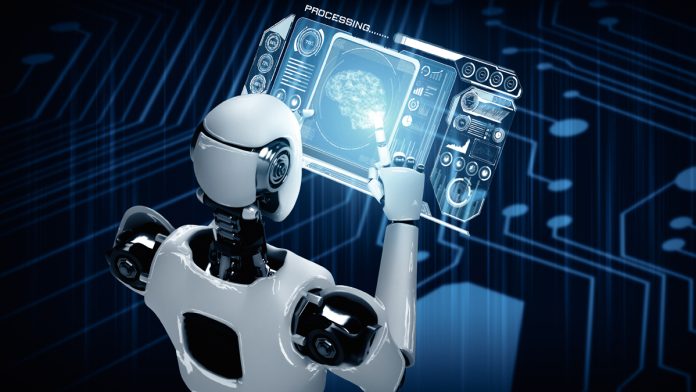Integrating AI and Machine Learning with Robotic Cinematic Systems is transforming how films are made. By embedding intelligent algorithms into camera rigs, filmmakers gain unprecedented control over framing, motion, and scene dynamics. This synergy accelerates production workflows, enhances creative possibilities, and raises the bar for visual storytelling. Below is a guided roadmap, complete with quick important topics to explore the key technologies and practices powering this revolution.
| Table of Contents | |
|---|---|
| I. | AI-Driven Cinematic Decision Pipelines |
| II. | Real-Time ML-Based Camera Motion Prediction |
| III. | Reinforcement Learning for Shot Composition Automation |
| IV. | Deep Learning Architectures in Multi-Axis Rig Control |
| V. | Edge-AI Inference Platforms for Low-Latency Onboard Processing |
| VI. | Sensor Fusion Strategies: Vision, Lidar & IMU Integration |
| VII. | Transfer Learning and Domain Adaptation in Dynamic Environments |
| VIII. | Automated Quality Assessment: Focus, Exposure & Framing with AI |
| IX. | Adaptive Control Loops: Balancing Autonomy and Director Inputs |
| X. | Modular AI-Ready Rig Design for Studio, Field & Aerial Use |
| XI. | Seamless Integration with Virtual Production and Unreal Engine |
| XII. | Data Annotation Workflows for Continuous Model Refinement |
| XIII. | Human-AI Collaboration Interfaces for Cinematographers |
| XIV. | Ethical, Safety & Reliability Frameworks in AI-Driven Filmmaking |
| XV. | Emerging Trends: Generative AI and Predictive Cinematic Effects |
AI-Driven Cinematic Decision Pipelines
AI-driven pipelines ingest storyboards, script metadata, and real-time sensor data to propose optimal camera setups. By analyzing narrative beats and visual style guides, these systems suggest shot sequences, lens choices, and camera positions, freeing cinematographers to focus on creative direction. A typical pipeline employs natural language processing on scripts, computer vision on location scans, and rule-based logic to generate actionable shot lists.
Real-Time ML-Based Camera Motion Prediction
Machine learning models trained on vast libraries of camera moves can predict the best crane or dolly trajectories before the shot starts. These models consider scene layout, actor blocking data, and desired pacing to output smooth X-Y-Z paths. By running inference on each frame, rigs adjust on the fly, ensuring that fast-moving subjects remain perfectly framed without manual recalibration.
Reinforcement Learning for Shot Composition Automation
Reinforcement learning (RL) agents learn “good” compositions by simulating reward functions tied to cinematic principles like the rule of thirds, dynamic lead space, and depth layering. During on-set trials, an RL agent experiments with pan, tilt, and tracking commands. Positive rewards reinforce camera behaviors that producers and directors approve, leading to rigs that autonomously discover innovative angles and movements.
Deep Learning Architectures in Multi-Axis Rig Control
Controlling six (or more) axes of motion with millimeter precision demands specialized neural networks. Convolutional LSTMs or graph neural networks can model spatial-temporal dependencies between motors, joints, and payloads. These architectures ingest high-frequency feedback from encoders and issue synchronized torque commands, ensuring fluid camera moves even under heavy lens loads.
Edge-AI Inference Platforms for Low-Latency Onboard Processing
Offloading ML inference to the rig itself avoids network delays. Edge-AI platforms powered by compact GPUs or NPUs run object detection, pose estimation, and trajectory planning in under 10 ms. Low latency is critical for live action and multi-angle shoots, where any lag can break synchronization between cameras or miss split-second moments.
Sensor Fusion Strategies: Vision, Lidar & IMU Integration
Combining RGB camera streams, Lidar point clouds, and inertial measurement unit (IMU) data yields a robust environmental model. Vision offers texture and color cues; Lidar provides precise depth maps; IMUs track rig vibrations. Fusing these inputs through Kalman filters or deep-learning–based fusion nets allows rigs to anticipate obstacles, maintain stability, and follow complex actor paths seamlessly.
Transfer Learning and Domain Adaptation in Dynamic Environments
Filmmaking spans studios, city streets, forests, and soundstages each with unique lighting and motion profiles. Transfer learning lets pre-trained models quickly adapt to new locales with minimal labeled data. Techniques like adversarial domain adaptation ensure that object detectors, motion planners, and quality-assessment nets maintain accuracy when lighting or textures shift dramatically.
Automated Quality Assessment: Focus, Exposure & Framing with AI
AI can continuously evaluate live footage for technical quality. Focus metrics derived from trained sharpness classifiers detect soft edges; exposure histograms processed by neural nets spot clipping; framing checkers ensure key subjects stay within safe zones. When issues arise, rigs can auto-tweak aperture, shutter speed, or framing parameters or notify operators for manual override.
Adaptive Control Loops: Balancing Autonomy and Director Inputs
Complete autonomy is not always desired. Adaptive control loops allow directors to set high-level goals (follow the hero at eye level) while AI handles low-level adjustments. Hybrid controllers blend PID loops with reinforcement policies: PIDs ensure stability; RL modules optimize shot dynamics. Directors use intuitive GUIs to adjust autonomy levels in real time.
Modular AI-Ready Rig Design for Studio, Field & Aerial Use
Modularity lets crews swap compute modules, sensors, or motors based on shoot requirements. A universal mounting platform supports ground rigs, drones, and cable-cams. Standardized communication buses carry power, data, and control signals. This design philosophy reduces setup time and ensures that AI software stacks remain consistent across different physical rigs.
Seamless Integration with Virtual Production and Unreal Engine
AI-empowered rigs bridge real and virtual worlds by syncing with game engines. Camera positions and lens metadata feed directly into Unreal Engine, rendering CG backgrounds in real time. Conversely, virtual scene data can guide physical rigs e.g., keeping a camera at the correct distance from a moving actor in a digitally augmented set.
Data Annotation Workflows for Continuous Model Refinement
High-quality ML demands accurate labels. Automated annotation tools pre-label footage using existing models; human reviewers then correct only edge-case frames. Version-controlled datasets track changes over time. Continuous retraining pipelines ensure that every new shoot enriches model performance, reducing manual labeling effort as systems mature.
Human-AI Collaboration Interfaces for Cinematographers
Intuitive dashboards visualize AI recommendations alongside live video feeds. Touch- and voice-driven controls let cinematographers accept, tweak, or reject AI-proposed moves. Visual overlays indicate predicted camera paths, framing guides, and autonomously identified subjects, fostering trust and preserving creative control.
Ethical, Safety & Reliability Frameworks in AI-Driven Filmmaking
Rigorous testing under worst-case scenarios guards against runaway motions. Safety interlocks halt movement when human crew enter danger zones. Ethical guidelines ensure AI-driven editing does not misrepresent performances. Reliability standards, modeled on aerospace protocols, mandate redundant sensors and watchdog monitors to prevent on-set failures.
Emerging Trends: Generative AI and Predictive Cinematic Effects
Next-generation systems will leverage generative models to craft virtual set extensions and predictive lighting schemes. By simulating how future frames might look, rigs can pre-adjust camera settings for dramatic effect. Predictive cinematic effects, like AI-driven depth-of-field shifts triggered by actor movement are on the horizon, promising wholly new storytelling tools.
By combining sophisticated AI/ML techniques with precision robotics, the cinema industry is entering an era of hyper-efficient, creatively liberated production. As these technologies continue to mature, filmmakers will wield cinematic rigs not just as tools, but as collaborative partners in bringing stories to life.

